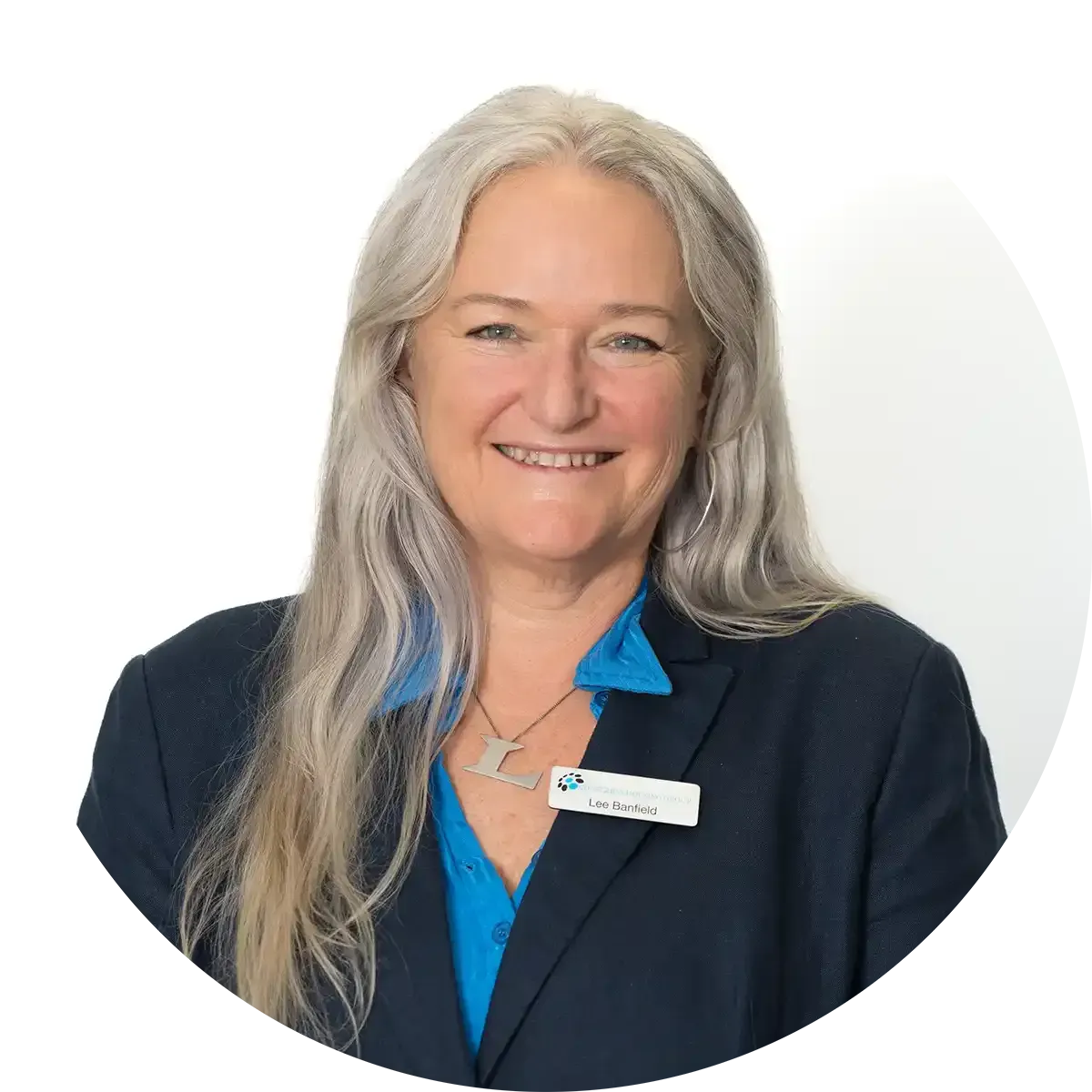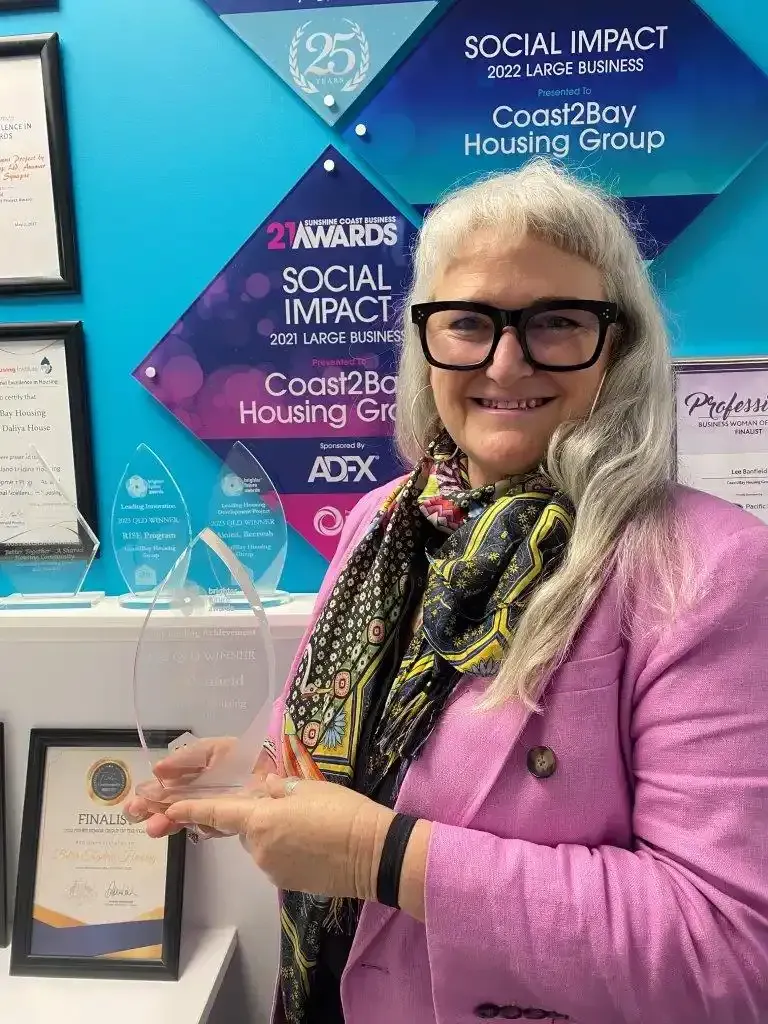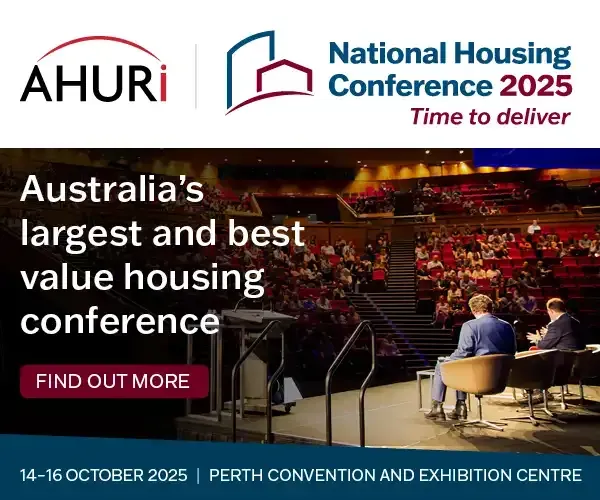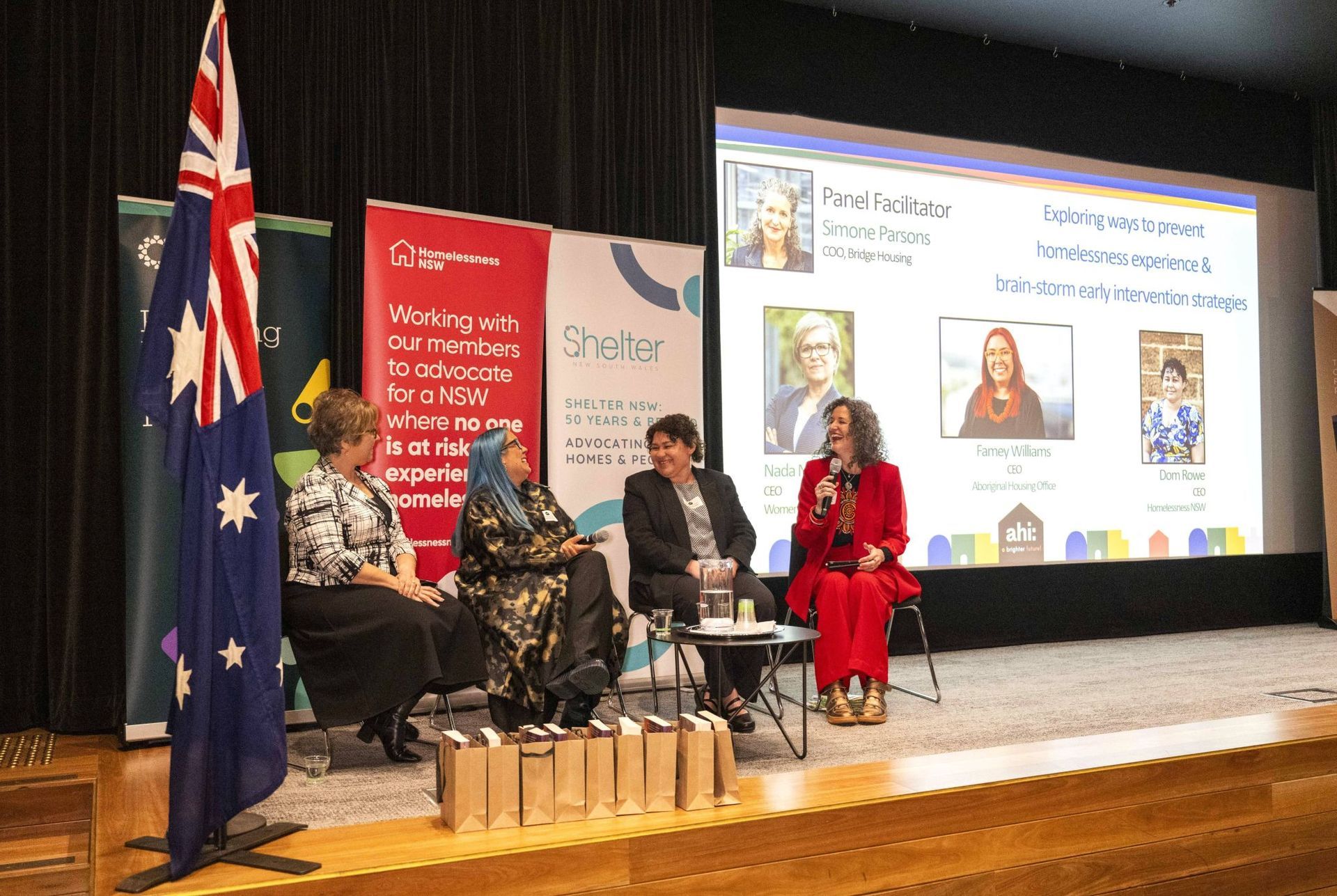With the Coast2Bay Housing Group and their employees up for many awards, there was no shortage of people on hand to whoop it up with
Lee Banfield when she was announced as the winner of the Outstanding Achievement at the Queensland ahi: Brighter Future Awards 2023. We find out more.
"Lee has played a key role in over 45,000 successful tenancies in the area."
As a school leaver, Lee admits the sector wasn't on her mind. She envisaged a career in nursing but, after enrolling in an undergraduate course, she quickly realised that bedpans, blood-pressure checks and starting IV lines weren't for her.
“After about 18 months, I decided to try something else," says Lee. "A friend of mine was working in a real estate business and said, 'We need some help, come in'. So, I started working in a real estate office in South Australia and stayed there for quite a long time."
It was a move from her home in South Australia to Queensland in the mid-90s that precipitated her shift from the private real estate industry to the social and affordable housing sector.
"I didn't know what I was going to do for work," she concedes. "And someone said to me that there was this housing resource worker job going at the Sunshine Coast Regional Housing Council [an earlier iteration of what is now Coast2Bay]. They thought I should go along and have a look. So, I did a bit of research, went along to this interview and got the job as a Housing Resource Service worker for Sunshine Coast Regional Housing Council in around August '96.”
Lee’s HRS role quickly became an advice, advocacy, service and community engagement role for tenants’ rights - fortuitously, perhaps, at a time when Queensland had only recently legislated a Residential Tenancies Act.
With her former home known for being a more progressive part of Australia, she was taken aback that similar rights for renters were only just seeing the light of day in the Sunshine State.
“I went along to some training with the Real Estate Institute of Queensland on the legislation, and there was a whole lot of owners of real estate companies who were at this training, saying things like 'Yeah, we heard that there was some new legislation, so we thought we better come and find out about it'. And it had been in place for over a year! I'm just thinking 'Where have I landed? What is going on?' [laughs]."
"She's done all this while being part of Coast2Bay’s growth from a staff of three people managing 80 properties to the leading Queensland Tier 1 housing provider."
Lee boasts an impressive CV beyond being the COO of Coast2Bay: Two terms on the Residential Tenancies Authority Board of Queensland; co-Chair of the Sunshine Coast Housing and Homelessness Network, and the management of their Housing and Homelessness Roadshow - a four-day event held in four different regional locations - and a range of state, national and international awards. She's done all this while being part of Coast2Bay’s growth from a staff of three people managing 80 properties to the leading Queensland Tier 1 housing provider and Sunshine Coast Business Awards Hall of Fame member organisation.
Proud of all her achievements, not to mention the work done by others in the Sunshine Coast’s social and affordable housing space, Lee confesses her involvement in the regional initiatives Better Together Housing and the RISE2 programs hold a special place in her heart.
A participant-driven project to support women over 55 who are experiencing significant housing insecurity, Better Together Housing was launched in 2017. As Lee explains, its aim is to support women to have conversations about their housing situation. While the precariousness of women’s housing is well known, Better Together Housing focuses on a segment of the community that don’t qualify for housing support.
“The group that comes in for Better Together are not social housing clientele—they're not actually eligible for social housing,” explains Lee. “They've got a little bit of super or some of them are still working, and they just know that the next time their rent goes up, or next time they have to move house, things are going to become really difficult.”
“We've worked with them about having conversations around sharing: Is sharing possible? And most of them don't want to share, but they're coming along to meet other women who are having the same issues.”
Despite their initial reluctance, Lee notes that over time, many of the participants would later find themselves re-thinking their initial resistance to shared living: “In the early days, we had women who came along to meetings for nearly 12 months and connected outside of the meetings; did trips away together. And it was six or 12 months before they actually started to talk about the possibility of sharing together.”
“The project has tried to give them some tools to have the conversations they need to have before they actually move-in together, and the tools to make the move as safe as possible, and to get comfortable about it.”
But the most special part of Better Together, for Lee, is seeing the Queensland Government invest in a program that’s not - in her words - “building a product”.
"Getting the state to fund something that isn't a housing [supply] solution, has been one of the highlights of my career."
"[RISE 2] was done with zero government funding and a lot of community support."
“That first project for RISE 2 was a duplex down in the southern area of the coast: a three bedroom and a two bedroom [house]," says Lee, "and it was done with zero government funding and a lot of community support."
"With both the donor of the land and the Zonta Club wanting it to be a crisis centre, the absence of state government funding made it virtually impossible to achieve," Lee continues. "So, we worked with The Salvation Army as a partner and came up with a model similar to a transitional DV (domestic violence) model where women and families that have been in a shelter––and had got their immediate crisis sorted out but still needed some ongoing support to connect back into community––could go. [Coast2Bay] took some of the risk out of the model by doing that.”
The model adopted by that first development has been successful enough to catch the eye of others. Through its Safe Places Emergency Accommodation Program, the Federal Government has since chipped in some much-needed funding to expand the service: “We had that property up and running with the support of the Salvos and we got funding for another eight dwellings, so now there’s 10 properties."
“We continue to be involved with the Zonta Club of Caloundra," says Lee. "And other Zonta Clubs [provide] the ongoing support we need for the women to feel safe and secure in those homes, and to get resources in for them."
“We've also set up a foundation that, ongoing, will fundraise to furnish those houses, so women can come into the houses and feel like they've got a nice environment. We've got some state government funding to do another nine dwellings, which are in various stages of construction, and we're in the process of negotiating with some additional funding for another nine. We're going to end up with 28 dwellings probably by the end of 2025.”
"I've been doing housing for… it must be 40 years...and it's been really good to me."
Lee describes the experience of winning this award as a gift: “I love the work. I've been in it for a long time, and I think the award… to have something acknowledged not just by your organisation but externally is just such a gift really.”
“I'm probably coming close to the end of my career,” she muses. “I've been doing housing for… it must be 40 years...and it's been really good to me."
"When I started with this organisation, there were three staff and we managed about a hundred properties. We now have nearly 50 staff and manage close to over a thousand houses. It's just phenomenal. It's been such rewarding, inspiring work to be able to provide people with such a basic element of their wellbeing.”
The ahi: Brighter Future Awards will be taking place again in 2025











